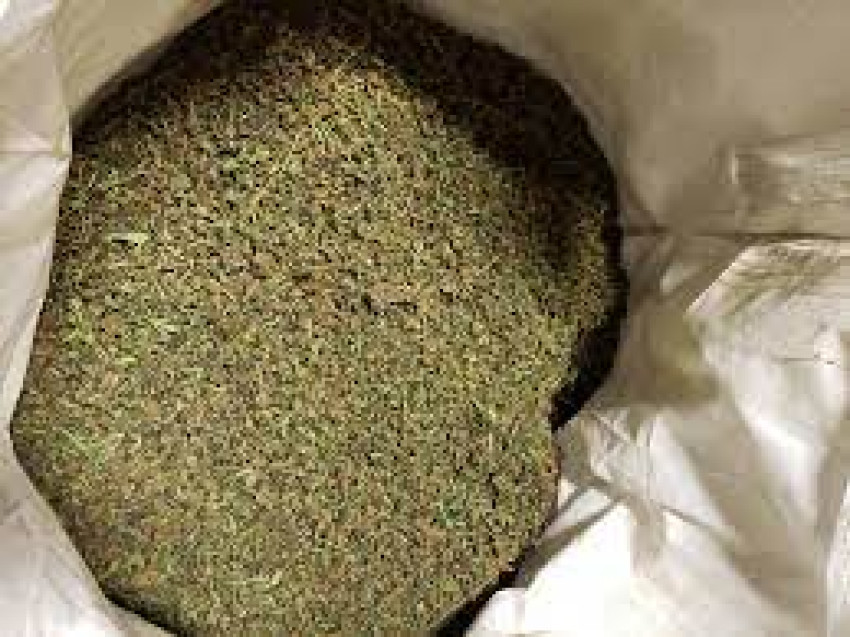
What is Hemp Biomass?
There may be some confusion about what CBD biomass is and which part of the plant it comes from. The correct definition of hemp biomass is the waste products left behind (which includes seeds, stalks, leaves, and flowers) only after the flowers have been extracted for use in other CBD products.
Hemp CBD biomass is processed to make oils, distillate, or isolate – the ingredients that are used to create finished CBD products like tinctures, topicals, cosmetics, pre-rolls, and more. It has a higher level of CBD than hemp biomass used for industrial products, such as fuel, textiles, and construction materials.
Which End-User Products are Derived From Hemp CBD Biomass?
Refining hemp CBD biomass produces different kinds of CBD products with various characteristics and potentcies.
Full Spectrum CBD
Whole plant CBD is another name for full spectrum CBD. It has the highest concentration of cannabinoids, terpenes, and other chemicals of any end-user product generated from CBD Hemp biomass processing and is also the least processed. Some people like full spectrum CBD because they think the entire plant yields a more potent result when all of the components interact with one another in what is known as a "entourage effect." Full spectrum CBD has the drawback of having a distinct earthy smell and scent that may not be suitable for items where it might affect the flavor profile. When opposed to distillates, the full spectrum has more contaminants and a higher concentration of THC.
Broad spectrum CBD
Broad spectrum CBD might be the solution for individuals who prefer a product with fewer pollutants and is cleaner. THC is distilled away, but cannabinoids and terpenes are still there. Others claim that it is just as potent as full spectrum because the cannabinoids and terpenes are still present, while some claim that it is less potent than full spectrum because some of the ingredients have been removed. It does share the same earthy flavor and aroma as full spectrum CBD; hence, the kinds of end-user goods it produces may be constrained.
CBD Isolate
CBD isolates are distilled to remove all contaminants, leaving you with a 99% pure CBD product. It's less strong than full spectrum or broad spectrum CBD, but since it has no flavor, smell, or color, it makes sense for people who want to add CBD to their edibles.
CBD Extraction and Distillation
CBD can be extracted from hemp either with solvents or without them. Solvents commonly used in extraction are carbon dioxide and ethanol. When carbon dioxide is used, it must first be taken from a gaseous state to a liquid one. Once in liquid form, heat and pressure are applied, which work to extract the cannabinoids from the hemp. Ethanol works in a way that’s similar to carbon dioxide, and can be used effectively as a solvent because of its polarity. To extract CBD without solvents requires intense pressure or a kind of rinsing technique.
Using solvents can remove terpenes and some cannabinoids, but ethanol extraction can leave the CBD with a grassy taste due to a chemical reaction that attracts chlorophyll. Carbon dioxide extraction is expensive and is technically difficult to do unless you know a lot about chemistry. Ethanol is highly flammable and could be a big fire risk if not done properly. Also, chlorophyll may not be safe for some populations, and can cause stomach upset or skin irritation.
There are some other ways to extract CBD on a smaller scale by using dry ice or olive oil. Dry ice is often difficult to secure and there’s a high risk of ruining your product if you don’t know exactly how to use this method. While olive oil is readily available, it’s very perishable and is only good for small yields.
After Extraction: Winterization and Decarboxylation
Winterization is the next step in the process for further purification. It involves placing the previously extracted products into a container with ethanol and putting it in a cold environment for at least two days. The cold causes impurities to solidify and fall to the bottom of the container. Once these impurities have been filtered out, heat is applied to turn the liquid CBD into a vapor and then passes through a tube where the pure distillate drips out. The process is repeated until the desired amount of CBD is achieved.
Decarboxylation takes place next, which uses heat to activate the cannabinoids in the hemp. It takes a lot of heat to activate the cannabinoids, which removes the heat-sensitive terpenes, leaving the product without the grassy taste found in less purified states of CBD distillation.
Distillation
After extraction, winterization, and decarboxylation, CBD can be distilled to refine it even further. When CBD is distilled and refined to 99% purity, it’s known as CBD isolate.
Why Buy Hemp CBD Biomass Instead of Bulk Ready-Made Ingredients?
If you’re prepared to take on the responsibility of processing your own biomass – either by using your own equipment or turning it over to an extractor and processor – you could save a substantial amount of money by purchasing biomass instead of buying the oils, distillates and isolates.
How Much Does it Cost to Buy CBD/Hemp Biomass?
If you’re looking for smaller quantities of CBD biomass, we charge $20-$30 per pound. But when you buy larger amounts in bulk, we can offer considerable discounts. Get in touch with us to learn more about bulk buying and to see how much you can save.
Why Buy CBD Biomass from Oil Well?
OilWell CBD is the biggest hemp distributor in Houston, and we’ve earned that spot due to our true passion for CBD, our knowledge about the industry, our superior customer service, and our ethical practices. We have a plentiful amount of biomass – from which you can create so many wonderful products – and you can be sure you’ll always get safe, reliable, and potent biomass when you purchase from us.




